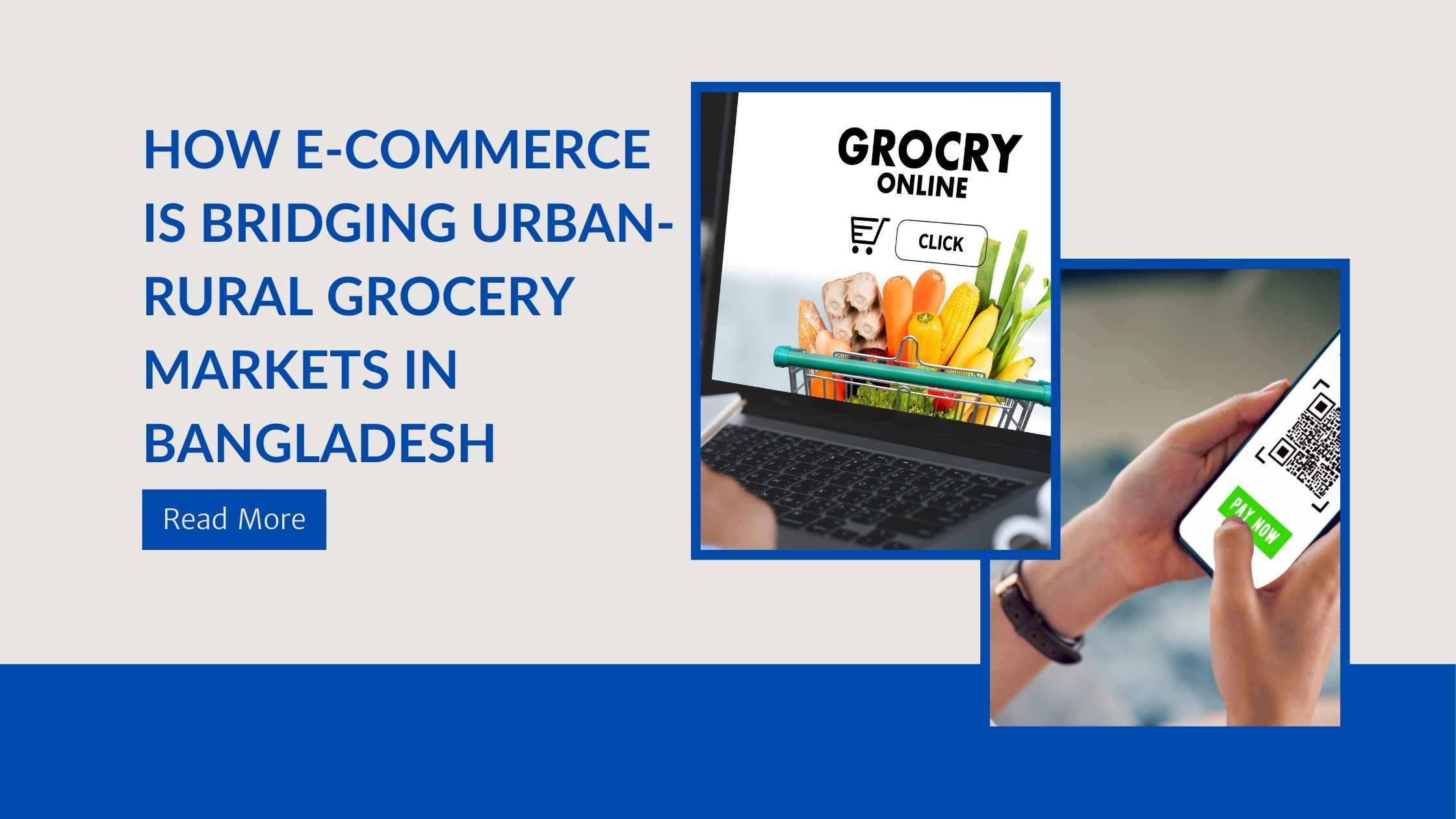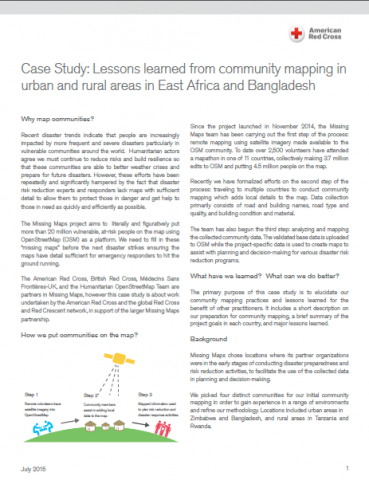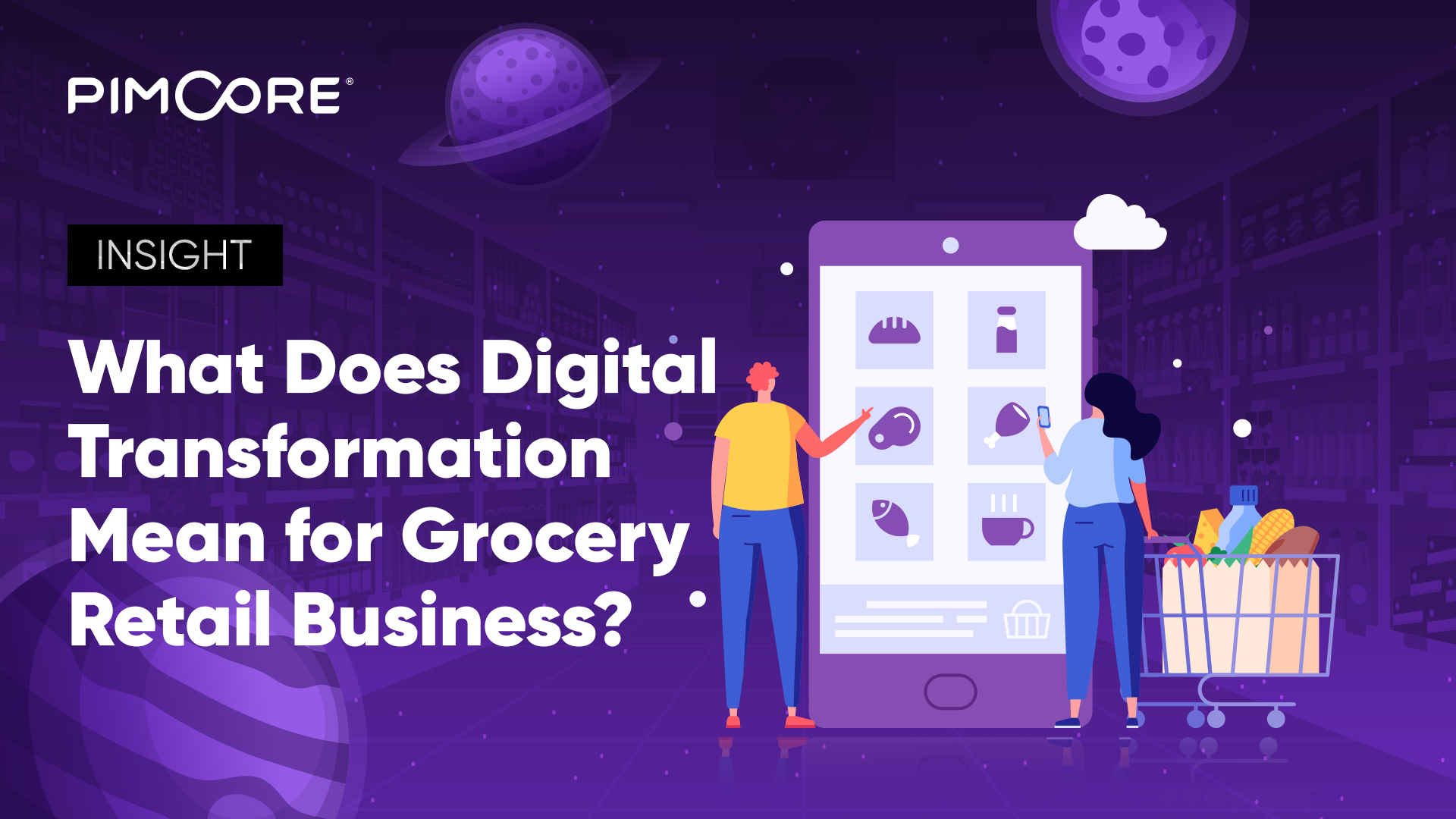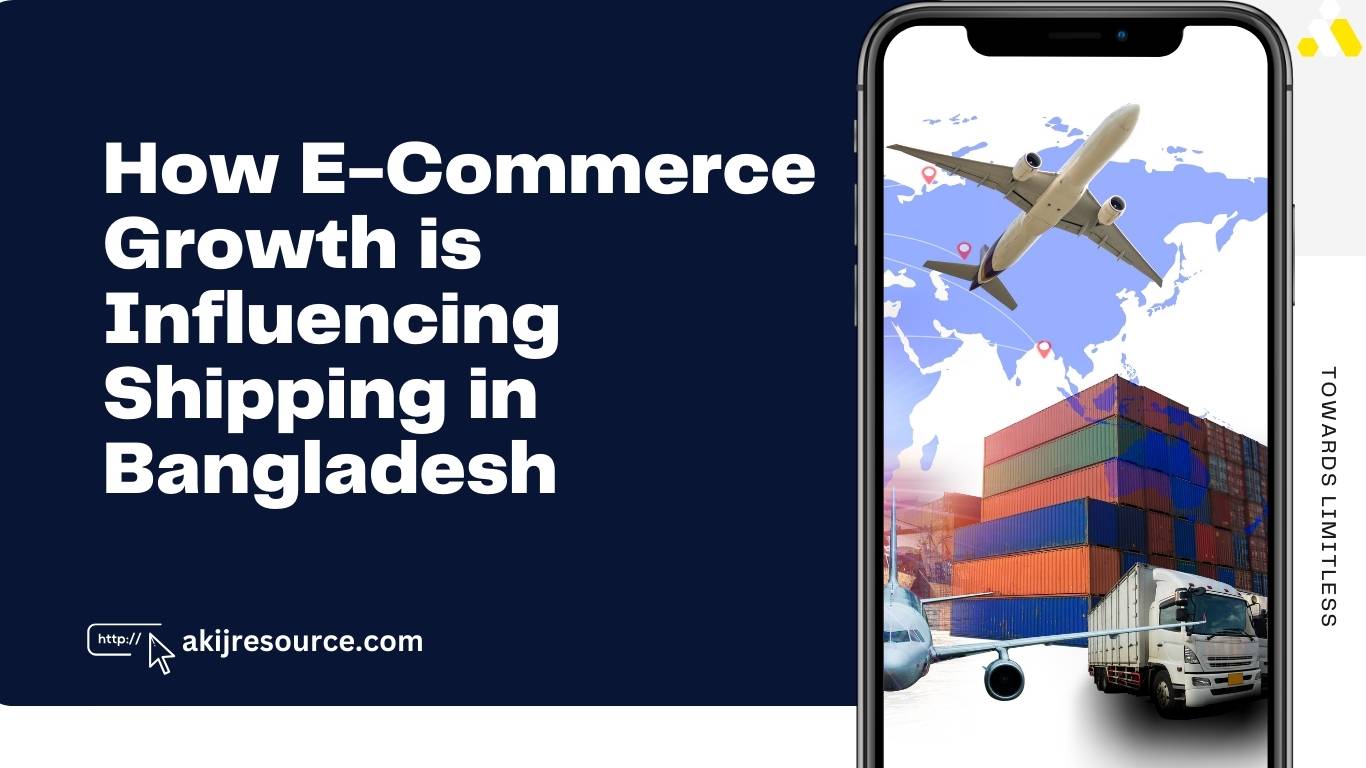E-commerce is bridging the gap between urban and rural grocery markets in Bangladesh by offering easy access to a wide range of products. It ensures timely delivery and promotes inclusivity in shopping.
E-commerce platforms are revolutionizing grocery shopping in Bangladesh. Rural areas often lack access to diverse grocery products, unlike urban centers. Online grocery stores provide a solution by delivering a variety of goods directly to rural doorsteps. This not only saves time but also reduces the travel burden for rural consumers.
Digital payment methods make transactions seamless and secure. E-commerce fosters economic growth by connecting rural producers with urban buyers. This digital bridge promotes inclusivity, enhances convenience, and drives market efficiency, benefiting both urban and rural populations in Bangladesh.
E-commerce Growth In Bangladesh
In recent years, e-commerce has dramatically transformed the grocery market in Bangladesh. This digital revolution is bridging the gap between urban and rural areas, allowing consumers from remote locations to access a wide variety of products. E-commerce growth in Bangladesh is a significant driver of this change, impacting both sellers and buyers alike.
Market Trends
The e-commerce market in Bangladesh is experiencing a rapid surge. Online grocery stores are gaining popularity due to the convenience they offer. The market trends show an increasing number of consumers shifting towards digital platforms for their daily needs.
Several factors are contributing to this growth:
- Increased internet penetration: With more people having access to the internet, online shopping has become more accessible.
- Smartphone usage: The rise in smartphone users has made it easier for people to shop online.
- Improved logistics: Enhanced delivery systems ensure that products reach even the most remote areas.
Here’s a table showing the growth of e-commerce in Bangladesh over the past few years:
| Year | E-commerce Sales (in million USD) | Growth Rate |
|---|---|---|
| 2018 | 650 | 20% |
| 2019 | 780 | 25% |
| 2020 | 975 | 30% |
| 2021 | 1250 | 28% |
These trends indicate a promising future for e-commerce in Bangladesh, especially in the grocery sector. Urban and rural consumers alike are benefiting from this shift, experiencing an unprecedented level of convenience and variety.
Technology Adoption
The adoption of technology is a key factor in the growth of e-commerce in Bangladesh. Several technological advancements are making it easier for businesses to operate online and for consumers to shop conveniently.
Key technologies driving this adoption include:
- Mobile apps: Many e-commerce platforms have developed user-friendly mobile apps, making online shopping accessible to all.
- Payment gateways: Secure and efficient payment systems are encouraging more people to make online transactions.
- AI and machine learning: These technologies help in personalizing the shopping experience, recommending products based on consumer preferences.
Consider the following benefits of technology adoption in e-commerce:
- Increased reach: Businesses can now reach customers in remote areas.
- Efficiency: Automation and advanced logistics streamline operations.
- Customer satisfaction: Personalized experiences lead to higher customer satisfaction.
Technology is playing a crucial role in bridging the urban-rural divide in the grocery market. Rural consumers now have access to a wide range of products that were previously only available in urban areas. This digital transformation is making grocery shopping more inclusive and convenient for everyone in Bangladesh.
Urban Vs. Rural Grocery Needs
In Bangladesh, e-commerce is transforming the way groceries are bought and sold. Urban vs. Rural Grocery Needs highlights the different demands and challenges faced by city and countryside consumers. With online platforms, these disparities are becoming less pronounced, making it easier for everyone to access the products they need.
Consumer Preferences
Urban consumers typically seek convenience and variety. They prefer quick delivery, a wide range of products, and high-quality items. Their grocery shopping often includes:
- Organic produce
- Imported goods
- Ready-to-eat meals
- Specialty items like gluten-free or vegan options
Rural consumers, on the other hand, prioritize affordability and availability. They focus on staple items and local produce. Their grocery preferences usually include:
- Locally sourced vegetables
- Basic grains like rice and wheat
- Essential household items
- Fresh dairy products
The table below summarizes these preferences:
| Category | Urban Preferences | Rural Preferences |
|---|---|---|
| Produce | Organic, Imported | Locally Sourced |
| Grains | Specialty (e.g., quinoa) | Basic (e.g., rice, wheat) |
| Meals | Ready-to-eat | Home-cooked essentials |
Accessibility Issues
Urban areas benefit from well-developed logistics and infrastructure. This makes grocery delivery faster and more reliable. Online platforms in cities can promise:
- Same-day delivery
- Multiple payment options
- Customer service support
- Easy returns and refunds
Rural areas face challenges such as poor road conditions and limited internet connectivity. These issues can make grocery delivery slow and less efficient. Common obstacles include:
- Delayed deliveries
- Limited payment options
- Low-quality customer service
- Higher delivery costs
E-commerce platforms are working to bridge these gaps by:
- Partnering with local shops for quicker deliveries
- Providing offline ordering options through phone calls
- Offering cash-on-delivery services
- Investing in better logistics and infrastructure
By addressing these accessibility issues, e-commerce is ensuring that both urban and rural customers in Bangladesh can enjoy the benefits of online grocery shopping.
Role Of E-commerce Platforms
In Bangladesh, e-commerce is transforming grocery shopping in both urban and rural areas. E-commerce platforms play a crucial role in this transformation. They connect urban consumers with rural markets, providing access to a wider range of products. This digital bridge ensures that even remote areas can enjoy the convenience and variety that urban shoppers have long taken for granted.
Popular Platforms
Several e-commerce platforms are making a significant impact in Bangladesh’s grocery market.
Chaldal: Chaldal is one of the most popular platforms. It offers a vast range of groceries, from fresh produce to household items. They have a user-friendly app that makes shopping easy for everyone.
Daraz: Daraz is another major player in the market. Although it is known for electronics and fashion, it has recently expanded into groceries. Their extensive delivery network helps reach even the most remote areas.
MeenaClick: MeenaClick, operated by Meena Bazar, focuses primarily on groceries. They offer a wide range of products, emphasizing quality and freshness.
Shwapno: Shwapno is a well-known grocery chain that also has a strong online presence. They provide an extensive range of products, ensuring quick and reliable deliveries.
Service Offerings
The service offerings of these e-commerce platforms are diverse and tailored to meet the needs of both urban and rural consumers.
- Home Delivery: Most platforms offer home delivery services, ensuring that groceries reach the doorstep of consumers.
- Subscription Services: Some platforms provide subscription services for regular grocery items. This ensures that consumers never run out of their essentials.
- Discounts and Offers: Platforms often provide discounts and special offers. These make online shopping more attractive and affordable.
- Cash on Delivery: Cash on delivery is a widely used payment method. It builds trust among consumers who are new to online shopping.
A table summarizing the key services offered by these platforms:
| Platform | Home Delivery | Subscription Services | Discounts | Cash on Delivery |
|---|---|---|---|---|
| Chaldal | Yes | Yes | Yes | Yes |
| Daraz | Yes | No | Yes | Yes |
| MeenaClick | Yes | Yes | Yes | Yes |
| Shwapno | Yes | No | Yes | Yes |
These comprehensive services make e-commerce platforms an essential part of the grocery market in Bangladesh. They provide unparalleled convenience and accessibility for all consumers.
Impact On Local Farmers
E-commerce is revolutionizing the grocery market in Bangladesh. It’s making it easier for urban and rural areas to connect. One significant impact is on local farmers. They are experiencing positive changes in many ways.
Direct Sales
Local farmers now have the opportunity to sell their products directly to consumers. This eliminates the need for middlemen. As a result, farmers receive better prices for their goods.
- Increased Profits: Farmers earn more by selling directly.
- Better Relationships: Direct interaction builds trust between farmers and buyers.
- Fresh Products: Consumers get fresher products straight from the farm.
Many e-commerce platforms offer farmers a place to list their products. This makes it easy for consumers to find and buy fresh produce. The table below shows the difference in earnings for farmers using traditional methods vs. e-commerce:
| Sales Method | Average Earnings per Kg (BDT) |
|---|---|
| Traditional | 30 |
| E-commerce | 50 |
Market Reach
E-commerce platforms expand the market reach for local farmers. They can now sell their products to urban consumers who were previously inaccessible.
- Wider Audience: Farmers reach more customers, increasing sales.
- Lower Costs: Marketing and transportation costs are reduced.
- Higher Demand: Urban consumers demand more diverse products.
Farmers can also use data from e-commerce platforms to understand market trends. This helps them decide which crops to grow, leading to better planning and higher yields. The following table illustrates the increase in market reach for farmers using e-commerce:
| Sales Method | Number of Customers |
|---|---|
| Traditional | 100 |
| E-commerce | 500 |
Logistical Challenges
In Bangladesh, e-commerce is rapidly bridging the gap between urban and rural grocery markets. The rise of online grocery platforms is transforming how people access essential goods. Despite its potential, this shift faces several logistical challenges. These challenges are crucial for ensuring efficient and reliable service to both urban and rural customers.
Transportation
Transportation remains a significant hurdle in the e-commerce landscape. Delivering groceries to rural areas is challenging due to various factors. Poor road infrastructure often slows down delivery times and increases costs.
Several issues affect transportation:
- Road Conditions: Many rural roads are unpaved and poorly maintained. This makes it difficult for delivery vehicles to navigate efficiently.
- Vehicle Availability: There is a lack of suitable vehicles for transporting perishable goods. This can lead to delays and spoilage of fresh produce.
- Distance: Rural areas are often far from urban centers. The long distances require more fuel and time, increasing operational costs.
To address these issues, some e-commerce companies are investing in specialized vehicles. These vehicles are equipped with refrigeration units to keep groceries fresh during transit. Additionally, partnerships with local transport providers are helping to improve delivery efficiency.
Here is a table summarizing the transportation challenges:
| Challenge | Impact |
|---|---|
| Poor Road Conditions | Slows down deliveries, increases costs |
| Vehicle Availability | Leads to delays and spoilage of goods |
| Distance | Requires more fuel and time, raises costs |
Distribution Networks
Effective distribution networks are essential for the success of e-commerce in rural markets. These networks ensure that groceries reach customers promptly and in good condition.
Key factors affecting distribution networks include:
- Warehouse Locations: Warehouses need to be strategically located to minimize delivery times. Proximity to rural areas can enhance distribution efficiency.
- Inventory Management: Proper inventory management ensures the availability of essential items. It also reduces the risk of stockouts and delays.
- Technology Integration: Advanced technologies like GPS and tracking systems help monitor deliveries. They provide real-time updates, ensuring timely and accurate deliveries.
Many e-commerce companies are adopting a hub-and-spoke model. This model involves central warehouses (hubs) and smaller local distribution centers (spokes). The hubs store bulk inventory, while the spokes handle last-mile delivery.
Here is a table illustrating the distribution network components:
| Component | Function |
|---|---|
| Central Warehouse (Hub) | Stores bulk inventory, acts as a central point |
| Local Distribution Centers (Spokes) | Handle last-mile delivery to rural areas |
| Technology Integration | Monitors deliveries, provides real-time updates |
By addressing these logistical challenges, e-commerce platforms can better serve both urban and rural markets. This will lead to a more connected and efficient grocery market in Bangladesh.
Payment Solutions
E-commerce is transforming grocery markets in Bangladesh by connecting urban and rural areas. Payment solutions play a crucial role in this transformation. They offer a variety of options that are accessible and convenient for everyone. This section explores how digital wallets and cash on delivery are making grocery shopping easier for all.
Digital Wallets
Digital wallets are revolutionizing payments in Bangladesh. They allow quick and secure transactions for both urban and rural customers. These wallets are accessible via smartphones, making them very user-friendly.
Benefits of Digital Wallets:
- Quick payments: Transactions are completed in seconds.
- Security: Digital wallets offer high-level encryption.
- Convenience: No need to carry cash or cards.
- Accessibility: Available to anyone with a smartphone.
Popular Digital Wallets in Bangladesh: Wallet NameFeaturesbKashFast transfers, bill payments, mobile rechargeRocketBank transfers, utility payments, online shoppingUpaySecure payments, easy registration, wide network
Digital wallets eliminate the need to visit physical banks. They make it easy for rural customers to pay for groceries online. This enhances the overall shopping experience.
Cash On Delivery
Cash on Delivery (COD) is another popular payment method in Bangladesh. It is especially useful for rural areas where digital literacy might be low.

Advantages of Cash on Delivery:
- Trust: Customers can see the product before paying.
- No need for bank accounts: Ideal for those without digital wallets.
- Simple: Easy to understand and use.
- Wider reach: Attracts more customers, especially in rural areas.
How Cash on Delivery Works:
- Customer places an order online.
- Delivery person brings the groceries to the customer’s home.
- Customer inspects the items.
- Payment is made in cash.
Challenges of Cash on Delivery:
- Risk: Handling cash can be risky for delivery personnel.
- Logistics: Coordinating deliveries and payments can be complex.
- Returns: More complicated if the customer wants to return the product.
Despite the challenges, Cash on Delivery remains a vital payment solution. It bridges the gap between urban and rural grocery markets, making e-commerce accessible to all.
Government Initiatives
In Bangladesh, e-commerce is revolutionizing the way groceries are bought and sold, connecting urban and rural markets like never before. The government has played a crucial role in this transformation through various initiatives. These initiatives are designed to create a more inclusive and efficient grocery market for everyone.
Policy Support
The Bangladeshi government has implemented several policy measures to boost e-commerce in grocery markets. These policies aim to make online shopping accessible and secure for both urban and rural consumers.
Key policy supports include:
- Digital Payment Systems: The government has promoted the use of mobile banking and online payment platforms to facilitate secure transactions.
- Tax Incentives: Tax breaks and incentives for e-commerce businesses encourage more entrepreneurs to enter the market.
- Consumer Protection Laws: New regulations ensure that buyers receive quality products and services, building trust in e-commerce.
- Training Programs: Initiatives to train rural vendors in digital literacy help them to sell their products online effectively.
These policies are making it easier for rural vendors to reach a wider customer base and for urban consumers to access fresh produce from rural areas. The table below summarizes some key policies:
| Policy | Impact |
|---|---|
| Digital Payment Systems | Secure and convenient transactions |
| Tax Incentives | Encourages new businesses |
| Consumer Protection Laws | Builds trust |
| Training Programs | Empowers rural vendors |
Infrastructure Development
Infrastructure development is another crucial area where the government has focused its efforts. Improved infrastructure helps in the smooth operation of e-commerce platforms and ensures that goods are delivered on time.
Key infrastructure developments include:
- Internet Connectivity: Expanding high-speed internet access to rural areas enables more people to shop and sell online.
- Road Networks: Better roads facilitate quicker and more reliable delivery services.
- Logistics Hubs: Establishing logistics centers in key locations helps manage inventory and streamline distribution.
- Warehouse Facilities: Modern warehouses ensure that perishable goods are stored in optimal conditions.
These efforts are bridging the gap between urban and rural markets, making it easier for rural producers to reach urban consumers. The table below provides an overview of key infrastructure developments:
| Infrastructure | Benefit |
|---|---|
| Internet Connectivity | Increases online accessibility |
| Road Networks | Facilitates faster deliveries |
| Logistics Hubs | Streamlines distribution |
| Warehouse Facilities | Ensures quality storage |
The Future Of Rural E-commerce: What Lies Ahead
As the digital landscape evolves, e-commerce in Bangladesh is making significant strides in narrowing the urban-rural market gap. With the rise of grocery shopping online, both urban and rural residents are experiencing a transformation in how they access groceries. The future of rural e-commerce holds immense potential to drive sustainable growth, expand markets, and spur innovation in rural grocery markets.
Sustainability
The shift towards online grocery shopping trends in Bangladesh is fostering sustainability in rural markets. Improving grocery access through e-commerce in rural areas reduces the need for physical stores, which in turn minimizes energy consumption and waste. Here’s how sustainability is being achieved:
- Reduced Carbon Footprint: E-commerce logistics for grocery markets in Bangladesh rely on optimized delivery routes, cutting down on fuel consumption.
- Less Food Waste: Digital platforms for grocery shopping allow for precise order quantities, reducing overstocking and food spoilage.
- Eco-friendly Packaging: Many e-commerce platforms are adopting biodegradable packaging, promoting environmental consciousness.
Challenges of rural e-commerce in Bangladesh include ensuring these sustainable practices are widely adopted. Yet, the benefits of e-commerce for rural grocery markets are evident in these initiatives.
Market Expansion
The growth of online grocery stores in Bangladesh is driving significant market expansion in rural areas. Rural customers now have access to a wider range of products that were previously unavailable.
| Aspect | Details |
|---|---|
| Product Variety | Rural consumers can now purchase imported goods and specialty items online. |
| Competitive Pricing | Access to various sellers leads to better prices and discounts for rural shoppers. |
| Convenience | Consumers can shop anytime and receive deliveries at their doorstep. |
The impact of e-commerce on rural communities in Bangladesh is profound, providing opportunities for local producers to tap into new markets and increase their income.
Driving Growth And Innovation In Rural Markets
E-commerce is driving growth and innovation in rural markets by leveraging technology and data to improve efficiency and customer satisfaction. Key areas of innovation include:
- Mobile Technology: With smartphones becoming more prevalent, even in remote areas, rural consumers can easily engage in grocery shopping online.
- Data Analytics: E-commerce platforms use data to understand rural consumer behavior, enabling personalized marketing and better inventory management.
- Payment Solutions: Digital payment methods are becoming more accessible, reducing the reliance on cash transactions and enhancing security.
The growth of online grocery stores in Bangladesh is also creating job opportunities in logistics, customer service, and IT, further boosting rural economies. How e-commerce is transforming grocery markets in Bangladesh is evident in the increased efficiency and accessibility it brings to these communities.
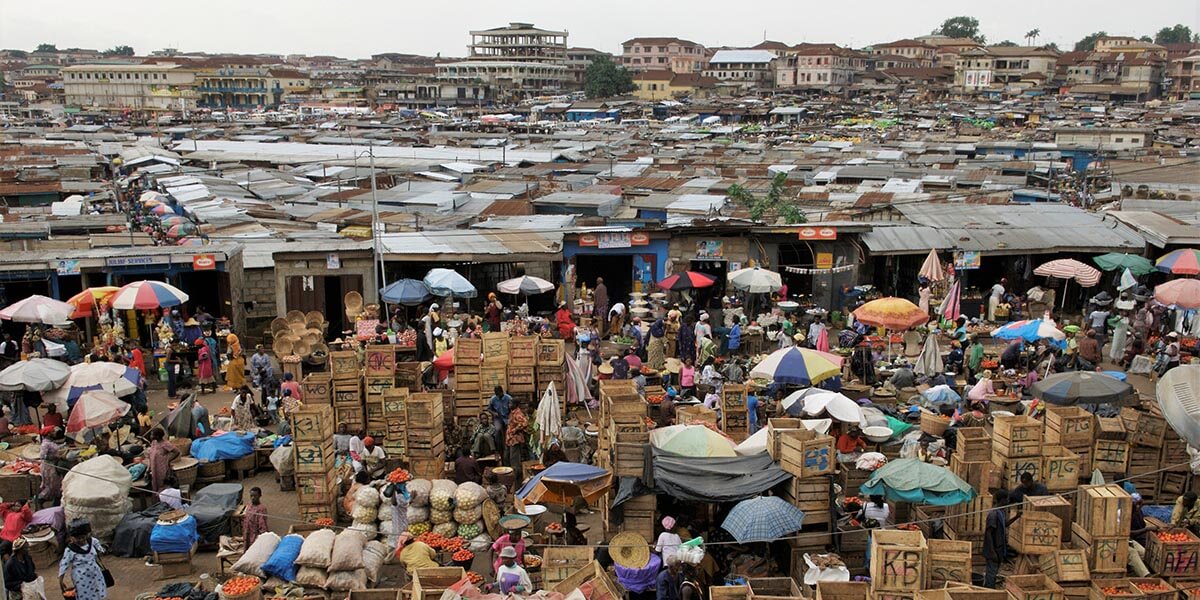
Credit: publications.wri.org
Frequently Asked Questions
How Does E-commerce Impact Rural Grocery Markets?
E-commerce enables rural consumers to access a wider variety of groceries. It bridges the gap by offering convenient delivery options. This reduces dependency on local stores.
What Benefits Do Urban Grocery Markets Gain From E-commerce?
Urban grocery markets benefit from expanded customer reach through e-commerce. They can tap into rural markets, increasing sales. It also helps in efficient inventory management.
Why Is E-commerce Important For Bangladesh’s Grocery Markets?
E-commerce is crucial for Bangladesh’s grocery markets due to its ability to connect urban and rural consumers. It offers convenience, variety, and competitive prices.
How Does E-commerce Improve Grocery Accessibility In Rural Areas?
E-commerce platforms provide rural areas with access to diverse grocery products. They offer home delivery services, making shopping convenient and efficient.
Conclusion
E-commerce is transforming grocery markets in Bangladesh. It bridges urban and rural gaps, offering convenience and variety. This shift benefits both consumers and local businesses. As technology advances, the impact will only grow, fostering a more connected and efficient marketplace across the country.
Embrace this change for a brighter future.

